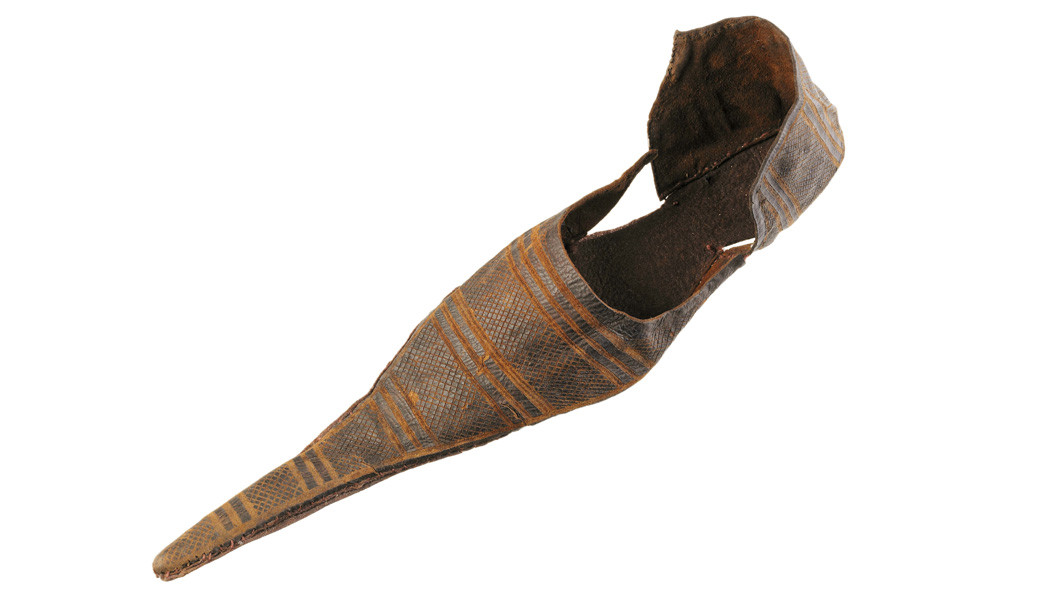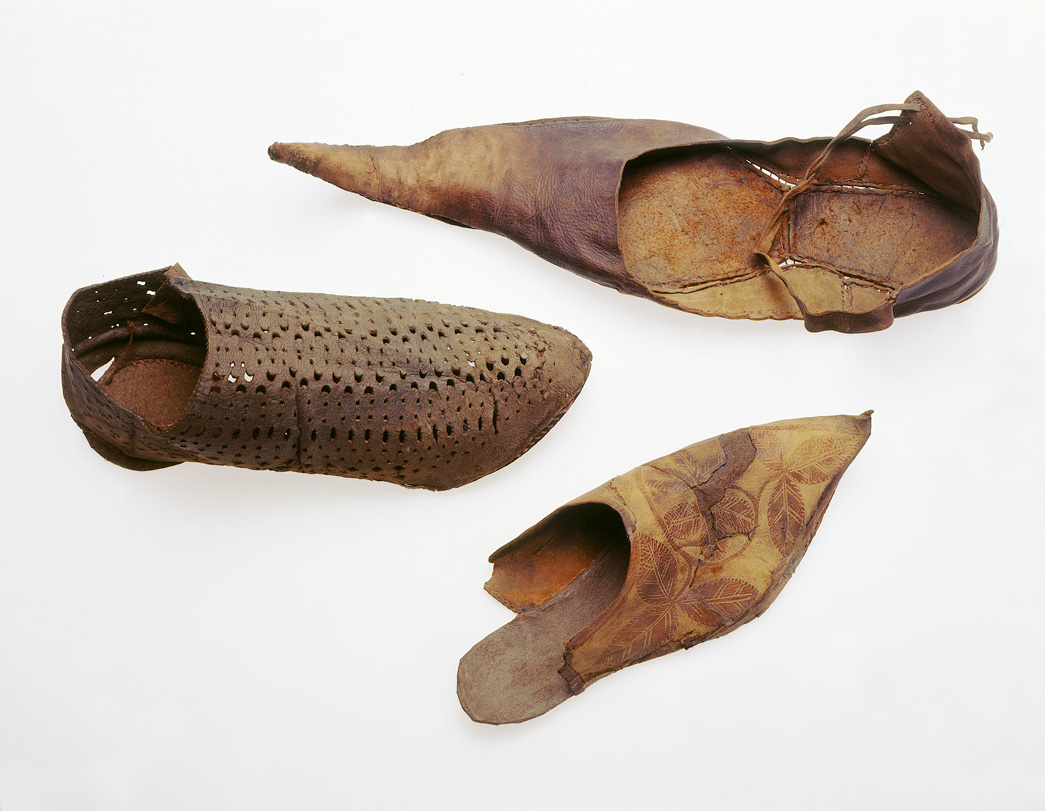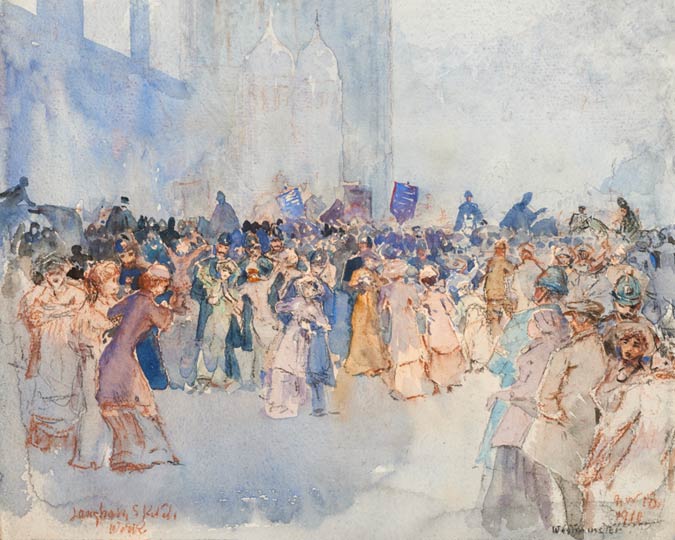We have some extravagantly pointy shoes in the Museum of London's medieval collections, known as "poulaines", or Polish shoes. This humble footwear hints at stories of same-sex love and London's hidden queer history.
Discover more LGBTQ+ stories from London's past. Celebrate LGBTQ+ History Month at the Museum of London with videos, articles and online events throughout February 2021.
The term poulaine evolved from the French term 'from Poland'. They were also called Cracows, as they were believed to originate in the city which is now Kraków. Their name refers specifically to the point of the shoe. Some of the shoes in our collection have points extending over 10 centimetres beyond the toe. In 1394 a monk of Evesham claimed some people wore shoes with pointed toes "half a yard in length [45 centimetres], thus it was necessary for them to be tied to the shin with chains of silver before they could walk with them".
Medieval people associated extravagant fashions, and pointed shoes in particular, with alternative or deviant sexualities. In the 12th century, Orderic Vitalis – a Benedictine English monk well regarded by historians – wrote that those who wore pointed shoes “gave themselves up to sodomitic filth”, and that young men who wore them also had “long luxurious locks like women,” and “over-tight shirts and tunics”.
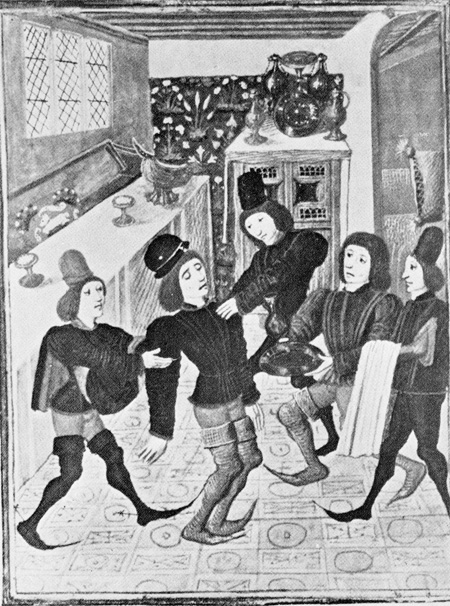
Gaston de Foix dying, 14th century
As described in Froissart's "Chronicles", from an attack said to be due to coronary disease. Note the shoes. Wellcome Collection
These slightly ridiculous shoes were the height of fashion from the 14th to 16th centuries. Although it seems absurd, you can actually see depictions of medieval knights wearing poulaines into battle – though their armourers would have to cut the toes off of the shoe so knights could still run in them.
As with many fashion movements before and since, this new trend was a controversial one to some people. Specifically, it was controversial because the church began to attack pointed shoes as contributing directly to people's sexual proclivities. That's right, the poulaine was seen to encourage what the medieval church referred to as sodomy: this was a catch-all term for any sex considered non-standard. The term "sodomite" was doled out generously to people, regardless of their gender, as and when they were accused of deviant sexual proclivities.
In 1348 the Black Death arrived in London, beginning an outbreak of plague that would kill approximately 40,000 people, somewhere between a third and half of the city's population. Clerics claimed that this was a divine punishment, the plague sent by God to punish Londoners for their sins, especially sexual sins. London's fashion scene became a symbol of that sin.
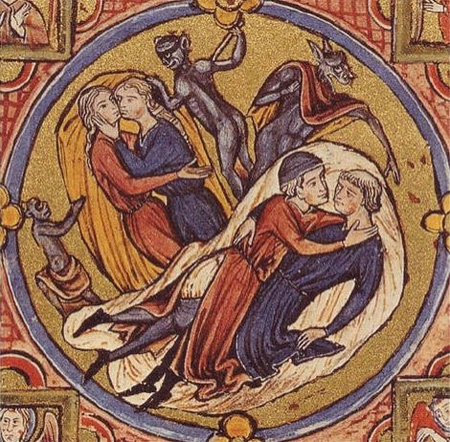
Medieval illustrated manuscript depicting same-sex love, 1220-30
From Bible Moralisée, collection of the Österreichische Nationalbibliothek, Vienna
As absurd as this accusation seems, there is a kind of reasoning behind it. The long point of the poulaine was regarded as phallic. They were mostly worn by young men, who used to stuff the toes of the shoe with wool or moss to make them harder. They would then stand on street corners and wiggle them suggestively at passerbys. It is said that if somebody wore poulaines with bells sewn to the ends of them, it indicated that the wearer was available for sexual frolics.
The idea of using fashion signifiers to advertise a sexuality considered deviant by society is a familiar one for the queer community. Other items in the Museum of London's collections have played a similar role through the ages, like a Labrys earring collected as recently as 1999.
Yet more seriously, in the eyes of the church, the great length of poulaines prevented people from being able to kneel, and therefore they prevented people from praying. Thus, they became the target of censure. Priests called them Satan's Claws.
In 1362, Pope Urban V passed an edict banning them, but it didn't really stop anybody from wearing them. England would proceed to pass sumptuary laws (laws governing dress and behaviour) which set out regulations for how long somebody's poulaines could be based on their station. Commoners were charged to wear shorter poulaines than barons and knights, who were regarded as less susceptible to the kind of “sodomitic filth” that the shoe encouraged.
It’s fascinating to interpret the important role that fashion was playing in a grimy, grim chapter of London’s history. It hints at Queer conversations of the period, that are so often overlooked. We might compare these medieval trends to the explosion of Queer influence on fashion and aesthetics throughout the 20th century and into the present day in London. There is a strong association between the sexual diversity of London’s population, and Queer contributions to the city’s vast and vibrant culture.
Discover more LGBTQ+ stories from London's past. Celebrate LGBTQ+ History Month at the Museum of London with videos, articles and online events throughout February 2021.








